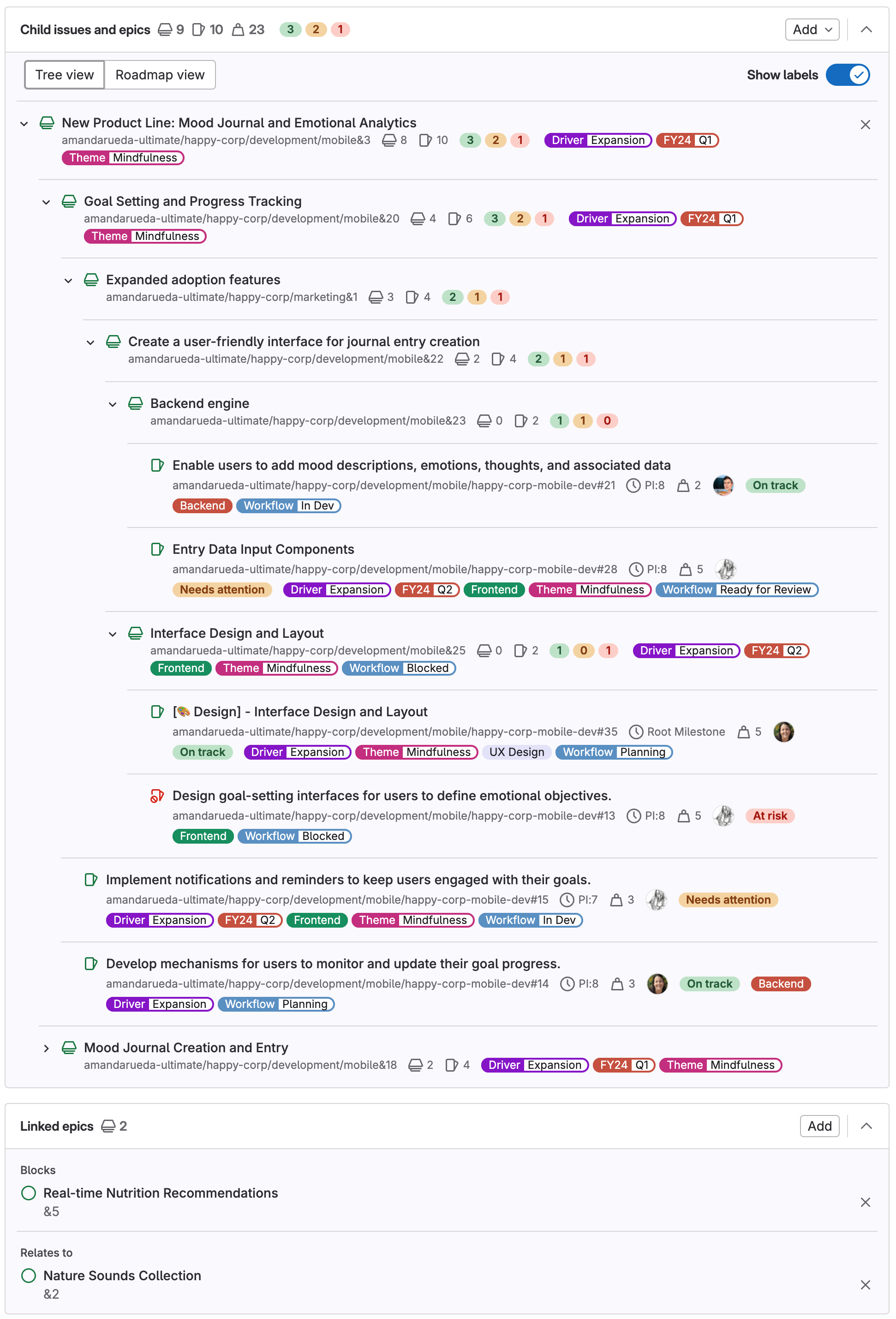Bringing teams together supercharges collaboration. Now you can take this a step further with a new GitLab Enterprise Agile Planning add-on that helps you bring non-technical users into the same DevSecOps platform where engineers build, test, secure, and deploy code.
The add-on enables you to support cross-team collaboration between developers and non-developers without having to purchase full GitLab licenses for non-engineering team members.
With additional Agile Planning seats ($15 per user/month), non-engineering team members can participate in planning workflows, measure software delivery velocity and impact with Value Stream Analytics, and utilize executive dashboards to drive organizational visibility.
This new Enterprise Agile Planning add-on is available to GitLab Ultimate subscriptions. Please contact your GitLab sales representative for more information.
Agile planning is most powerful when it extends its reach beyond developers to include stakeholders like product managers, designers, marketing, and sales teams. Here are three ways GitLab can bring value to your entire software development process:
1. Scale up as your team grows
GitLab's Enterprise Agile Planning capabilities are designed to grow with your organization. As your teams expand, so do your needs for Agile planning capabilities and cross-team collaboration. As a unified platform with a single data store, GitLab provides different stakeholders within the organization with a curated view of project status, enabling teams to track progress, identify bottlenecks, and make informed decisions. GitLab supports multi-year and cross-team planning workflows, enabling you to do strategic and tactical planning within a single tool. These efficient cross-team workflows help projects move faster from concept to delivery, ensuring a competitive edge in today’s fast-paced digital landscape.

Migrating from Jira? Learn more here.
2. Bring compliance closer to development
GitLab ensures that compliance checks and enforcements are automated and seamlessly integrated into software development, making the process more efficient and transparent, and less error-prone. In GitLab, compliance checks like approval rules, compliance pipelines, and deployment approvals are closer to the code as part of developers’ natural workflow, rather than a separate workflow or within a separate issue-tracking tool. With GitLab, reviewers can more easily review the updates in the context of the change and developers can receive more rapid feedback.

Learn more about GitLab Enterprise Agile Planning.
3. Eliminate time-consuming configurations
Many Agile planning tools are highly customizable. That can be great for building highly complex and sophisticated workflows, but that complexity can also be a maintenance hazard. Spending time on tool maintenance limits innovation and creates friction in your team’s day-to-day work. GitLab prioritizes convention over configuration to deliver exceptional user experiences that work as-is by default while also giving flexible configuration options so that teams can spend less time on maintenance and more time on innovation. A simplified planning tool within the DevSecOps platform where code is built and delivered drives collaboration, transparency, and trust across all roles, leading to a better cross-team experience to build software faster.
Are you ready for the Atlassian Server end of life? Learn more about the benefits of migrating from Atlassian to GitLab.
Get started with GitLab Enterprise Agile Planning
In true GitLab fashion, we continue to rapidly iterate on our Enterprise Agile Planning capabilities. When you’re ready to get started, we’re here to help.






